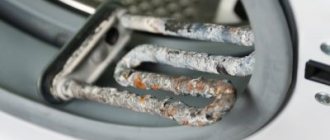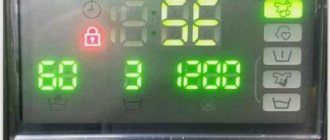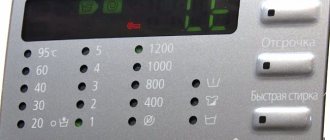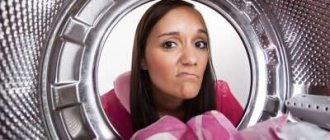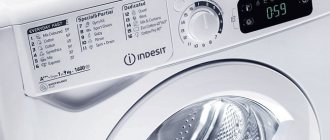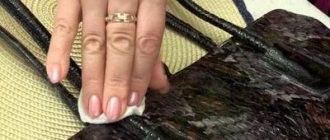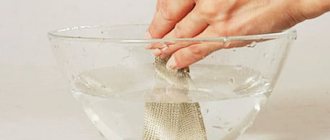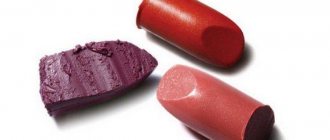Imagine that you bought a new washing machine, and everyone likes it: it works without failures, and washes flawlessly: the laundry is always fresh and smells good. But time passes, and newly washed clothes acquire an unpleasant odor. The reason lies in the “washing machine” itself: moisture constantly accumulates inside, mold and limescale form. All this together leads to the appearance of a disgusting “aroma”. The problem will be solved only by thorough cleaning of the washing machine, for example, with soda, vinegar, citric acid and other folk remedies.
Benefits of baking soda in fighting scale and odor
Soda in the everyday sense refers to the three most popular sodium compounds - carbonate (Na2CO3), bicarbonate (NaHCO3) and hydroxide (NaOH). To recognize these chemical compounds, you need to remember the names of soda: baking soda, soda ash and caustic soda. All these substances have two important properties - the ability to disinfect surfaces and dissolve calcium deposits. This is precisely the problem that washing machines can suffer from when frequently used with water without cleaning filters.
Hard water is the main cause of the formation of calcified plaque. It is easy to notice on the walls of the powder supply tray. The deposits are white in color and resemble pieces of wet chalk, but their hardness is comparable to stone.
The same layers may be present on the internal parts of the washing unit. Calcium settles on both plastic and metal parts of the device. The effect of plaque becomes especially critical for iron. If foreign layers begin to form at the joints of parts or on a rotating drum, this will physically interfere with the normal operation of the mechanism, grinding down the parts.
The second serious problem is the accumulation of bacteria that can cause mildew and mold. You can determine their appearance primarily by the color of the coating on the tray or the enamel under the rubber seal for the manhole cover. If a gray-green tint appears, this means that bacteria have begun to actively multiply.
Super soda-based laundry detergent
Domestic housewives have a recipe for an eco-friendly homemade preparation that copes well with most stains on clothes, linen and other fabric items. In any case, the product works no worse than store-bought powder or gel. The product's formulation contains no potentially harmful components that could cause an allergic reaction or otherwise harm human health or the environment.
The gel contains the following ingredients:
- Soda Ash
. As already mentioned, this is the main and absolutely safe component of purchased laundry detergents. During the first cleaning procedures, Sodium carbonate will release particles of accumulated chemical compounds present in industrial powders from fabric fibers.
- Regular laundry soap.
Previously, it was widely used for washing, now it is undeservedly forgotten, but, of course, it has not lost its effectiveness.
- Essential oil
, which will give things a delicate aroma. If you take a product with bactericidal properties, during washing the items, the interior space and the mechanism of the washing machine will be additionally disinfected. It can be tea tree oil, any coniferous oil. But even if you don't add essential oil, your clothes won't smell like laundry soap. After washing, one smell will remain - the aroma of cleanliness. Especially if you dry it outside.
The gel does not produce foam, but washes very well. However, you need to take into account that the same rule applies here as in the case of using pure soda - you cannot wash silk, linen, wool, or synthetic items with it. To do this, it is better to take baby shampoo or an alternative product.
What is the difference between baking soda and soda ash?
The differences between these sodium compounds lie in the level of alkali. The edible version is a mild substance that can regulate acidity. The traditional method of eliminating heartburn recommends diluting baking soda with water and drinking an improvised “fizzy drink”. It regulates the oxidation process in the stomach and also balances the digestion of food. Culinary experts are well aware of the ability of baking soda to speed up the fermentation process of dough by creating small air bubbles in its structure. Therefore, this ingredient is often used for baking fluffy flour products.
Many housewives use baking soda in combination with laundry soap shavings to safely clean kitchen surfaces, dishes or plumbing fixtures. The calcined version is a more aggressive alkali, therefore it is used only for household cleaning . It cannot be used for cooking.
Important! When working with soda ash, be sure to wear rubber gloves to protect your hands. For people with hypersensitivity, it is best to use additional protection, for example, a simple medical mask.
Soda can act as the main component of disinfection in the consistency of a slurry mixed with water. This refers to the physical cleaning of surfaces. A separate function is the ability to bleach thick cotton or linen fabrics. Soda ash can be sold under the name “linen” in special packaging in supermarket hardware departments. The powder is intended for adding thick white linen to the container during separate boiling. Some housewives pour a tablespoon of the mixture directly into the tray of the washing machine when washing on the “cotton” mode.
In what cases is it permissible to add, and when should it not be done?
The use of baking powder is justified in the following cases:
- elimination of unpleasant odors - for example, cigarette smoke;
- enhancing the whitening effect;
- softening the hardness of water - the more ideal its balance, the better the item is washed;
- disinfection in situations where the use of other agents causes an allergic reaction;
- Instead of conditioner, baking soda will provide excellent softness to your laundry.
You should not use baking powder if:
- the composition of the fabric does not tolerate any aggressive influence - usually this information is indicated on the label of the item;
- the material fades.
Read about how to use washing soda in the washing machine and by hand here.
Cleaning the washing machine with soda ash
If dirt or hard deposits are noticed in the machine tray or under the rubber band, then before cleaning it is necessary to check the condition of all accessible components and prepare them for cleaning:
- the tray is completely removed from the fastenings;
- the water supply is shut off, the emergency drain hatches and the water supply inlet are opened;
- meshes and plastic rings are removed;
- the hatch is opened, the surface under the sealing rubber and the drum are inspected.
Soda ash powder is diluted in half with water to a paste. For preparation, use enamel or metal utensils, an old toothbrush, a sponge, and rubber gloves.
It is most effective to apply the mixture to all surfaces with plaque and leave for one hour. After this, the cleaning mixture can be wiped with a sponge. If cleaning is required in a hard-to-reach place, or the sponge does not erase the plaque, then these areas can be rubbed with a toothbrush until the foreign elements are completely removed.
After cleaning, all parts must be rinsed with running water and returned to their original condition. For subsequent safe use, it is best to run the longest wash cycle without laundry (idle) at the highest possible temperature.
Advice! If soda ash is not available, you can do the same with regular food powder, but its effectiveness will be slightly lower.
Tips and tricks for using baking soda powder
There are some practical tips regarding the use of this simple remedy:
- if there is no need to bleach and deodorize things, the product can be used as a conditioner; it will give clothes extraordinary softness;
- its use is an excellent alternative to many expensive powders; it will not only give good results, but also save money;
- wash linen and cotton items with soda;
- Clothes made of silk, wool, and lace items cannot be washed with this product;
- if the water is very hard, add more soda ash, wash at a temperature of at least 50 degrees.
From all of the above, it is clear that such a product should be one of the most necessary attributes of a household. With its help, every housewife can easily keep her things and the things of her family clean and tidy.
https://sodalab.ru
How else can you clean your washing machine?
High-quality cleaning of a washing machine is possible not only with soda, but also with other well-known folk remedies. For example, citric acid. To clean the tank, about 200 grams of acid is enough. This amount can be poured directly into the drum of the washing machine or into the powder tray - depending on what exactly you are going to clean.
Some people prefer squeezed lemon juice to citric acid, believing that it also effectively removes dirt. This is a misconception: the juice has a much lower concentration and is unlikely to cope with scale and old limescale.
One of the most effective compositions for cleaning the inside of a washing machine is table vinegar (9%). Pour it into the machine tray and run a long wash cycle at high temperature. Do not load laundry into the hatch. After an hour, you need to pause the machine, wait about an hour and after a break, start the wash cycle again. After finishing the job, clean individual parts using an old toothbrush or a small brush. This is done in order to remove any remaining scale.
When the cleaning procedure is completed, do not forget to wipe all elements with a dry soft cloth or cloth. It is better to leave the drum of the machine open so that it is ventilated and after some time the unpleasant smell of vinegar evaporates.
Prevention for rubber
Residual moisture and dirt accumulate in the door sealing rubber. Therefore, mold often appears here. SMA manufacturers strongly recommend wiping the cuff dry after each wash cycle and leaving the hatch open.
Expert opinion
I work in the household appliance repair industry. Extensive experience in restoring washing machines and dishwashers.
Ask a Question
Once a week, it is necessary to treat the rubber with a soda solution using a soft cloth to prevent the appearance of fungus. A toothbrush or small brush will help you get to hard-to-reach places. At the same time, you cannot pull the rubber too hard, as this can damage the surface.
Alternative ways to bleach things
You can bleach white things using soap and potassium permanganate:
2 basins of 4-5 liters of water are placed on the fire to boil. Laundry soap 72% is grated. The water has boiled, turn off the heat and add soap to one saucepan, stir until the soap dissolves properly. Approximately 10 crystals of potassium permanganate are dissolved in another saucepan. Don't overdo it: the solution should be red, not purple. Pour the solution with soap into the potassium permanganate solution. You need to mix again - the solution will foam. We put the laundry in it. Any dirty white things with stains will do: grass, oil, rust, ballpoint pens. Experience shows that stains are removed if the laundry is kept in the solution for 6-8 hours.
Ammonia and hydrogen peroxide (3%) are also used to bleach laundry:
In an enamel bucket, heat 10 liters of water to 70 degrees, add 1 tbsp. a spoonful of ammonia and 2 tbsp. l. peroxide. Using wooden tongs, place the laundry in the solution and gently stir until the items are completely wet. Leave the laundry to soak for 20-30 minutes, and then rinse and wash in the usual way.
How to clean a washing machine with soda
Baking soda is a universal cleaning agent that is used to solve various household problems. It can be used in cooking, for cleaning kitchen utensils, for removing stains during washing, or for bleaching things. Also, soda can be actively used to clean the parts of automatic washing machines from limescale. In this article we will tell you how to clean a washing machine from limescale and dirt with soda.
Which one should you choose?
Any type of soda is suitable for cleaning and washing fabrics. Which one to choose depends on the intended purpose, the degree of contamination of the item and the composition of the fabric.
Food grade - works great where radical whitening is not required . This is an ideal solution for colored items that need to soften and eliminate unpleasant odors.
Soda ash is several times more concentrated. It can remove difficult to remove stains - grease, tea, coffee, and also return the fabric to its former whiteness.

